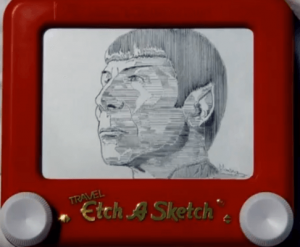In the history of CX, there have never been more ways for agents to engage with customers than there are today. As new technologies emerge and integrate themselves into CX workflows, they’re expanding and enhancing the existing toolkit more than replacing old tools, granting both customers and support personnel more channels to communicate effectively without a steep learning curve for either side of receiving or delivering the customer experience.
But the explosion of customer engagement channels has presented new challenges of its own. With more touchpoints to manage and higher expectations from customers looking for efficient service, where does the modern customer service advisor begin?
The Problem: A Multichannel Myth
Companies today realize they need to embrace a “multichannel” CX solution that enables different agents to communicate with customers via whatever channel the customer prefers to engage. The conventional thinking is that more channels is better, but this thinking is often flawed. Supporting a vast array of communication channels—phone/IVR, email, mobile apps, online FAQs, live chats, SMS, Twitter—does not, in itself, guarantee that agents will be providing better service.
What enables agents to effectively manage all of the inquiries coming in across multiple platforms? Often, nothing does.
Contact centers may, for instance, excel at handling incoming service phone calls but fail to expedite online chat inquiries or email service requests in a timely manner. Moreover, a “swivel-chair” approach rarely solves the problem. Having individual agents try to manage multiple non-integrated communication platforms, entering data from one computer into another, can lead to errors in data tracking. Agents may unknowingly make several contacts with the same customers, or reply on different channels out of sequence, providing mistaken or conflicting information. These disparate, non-integrated communication channels can perpetuate the dreaded organizational silo effect, whereby your company is perceived as a many-headed entity rather than one unified brand. All of this lack of coordinated channel management causes lost leads, leaks in the sales funnel, or unsatisfying customer experiences.
So while multichannel approaches may sound good in theory, most fail to adequately integrate those channels in order to maximize the service experience. Today’s multiple channels need to be connected with stronger glue.
The Solution: A Blended Agent with Omnichannel Tools
Fortunately, companies like Ticketmaster have found a solution to these multichannel woes through establishing a new definition of a blended agent. Able to communicate across multiple channels simultaneously, skilled in both inbound and outbound CX engagements, the blended agent of 2015 leads customers through well-designed customer journeys in real time.
 To achieve this, today’s blended agent adopts an omnichannel approach, using new software solutions that seamlessly integrate the multiple channels that, when they only function independently, so confound other agents’ lives. Blended agents armed with an omnichannel desktop can see, on just one screen, the entire history of a customer’s interactions with an organization, even as new interactions come through in real time. Formerly disparate channels are blended together into panes of a single window, granting the blended agent an omnichannel overview of all the interaction channels at his or her disposal. Customer queries can be responded to deftly, handled by a single agent. And even if a task would be better served if passed on to a channel-specific specialist—which generally still exist in contact centers to maximize service quality and efficiency—those specialists also become increasingly effective agents once they gain access to an omnichannel customer overview.
To achieve this, today’s blended agent adopts an omnichannel approach, using new software solutions that seamlessly integrate the multiple channels that, when they only function independently, so confound other agents’ lives. Blended agents armed with an omnichannel desktop can see, on just one screen, the entire history of a customer’s interactions with an organization, even as new interactions come through in real time. Formerly disparate channels are blended together into panes of a single window, granting the blended agent an omnichannel overview of all the interaction channels at his or her disposal. Customer queries can be responded to deftly, handled by a single agent. And even if a task would be better served if passed on to a channel-specific specialist—which generally still exist in contact centers to maximize service quality and efficiency—those specialists also become increasingly effective agents once they gain access to an omnichannel customer overview.
You can think of blended agents as the SEALs of the CX world, using technology-aided teamwork to accomplish their daily missions in contact centers everywhere.
The Benefits of the Blended Omnichannel Agent
Contact centers that embrace a blended agent approach through omnichannel technology are clearly able to better orchestrate communication between all customer touchpoints, monitor a self-directed or agent-led CX journey efficiently, and adjust the experience as needed to improve it, on the fly.
In addition to orchestrating, monitoring, and fine-tuning CX, the blended agent also works more efficiently and makes better use of his or her time than the multichannel agent. With help from their omnichannel integrated dashboard, the blended agent can manage inbound and outbound service communication across platforms, moving seamlessly between channels in order to manage service and make the most of the work day.
In essence, the blended agent has access to a complete set of CX tools thanks to their omnichannel desktop.
For example, a blended agent might proactively initiate a response to a customer’s behavior on a website, such as a service query. The agent can first reach out to the customer over live chat, offer to call the customer if he or she would prefer to communicate that way, and then, after speaking with the customer over the phone, the agent might recognize that the customer’s issue can best be handled by watching a three-minute video tutorial on the company website. The agent then sends a link for the helpful video to the customer via SMS and email, and stays on the line in case any other issues or questions arise.
By adopting omnichannel technology and the cross-channel communication skills of the blended agent, it’s possible to transform product searches, credit card applications, service requests, and even late shipment notifications from hassles into opportunities to strengthen customer relationships. Deploying a team of blended agents, powered by integrated omnichannel dashboards, is perhaps the smartest tactical possibility for all companies who refuse to leave a customer behind.
(286)
Report Post






